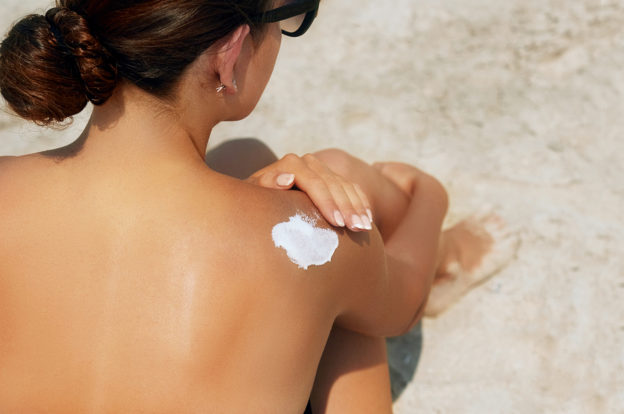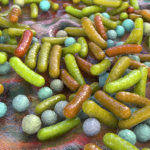By David Blyweiss, M.D., Advanced Natural Wellness
June 5, 2019
There is a formidable document that has been sitting on my desk for a couple of months now. Today, I finally took the time to read it in full.
It’s a much needed FDA proposal for updated sunscreen regulation. And with summer nearly upon us, I think it’s important that you know the facts. (This is one of the few times the FDA – which usually works at cross-purposes – is in agreement with my viewpoint.)
In the past, I have been very vocal about the potential harms of certain sunscreen ingredients. And a lot of patients scoff at my concerns.
Everybody uses them, they say. They’re sold everywhere. How harmful can they really be?
Well, let me present the dirty truth about sun blockers one more time… this time with the FDA standing solidly behind me.
Most people don’t realize it, but very few of the sunscreens available today have ever been tested for safety. This has been a concern of mine for years.
Open your arteries, improve blood flow for a new health miracle...
Did you know your circulatory system has over 60,000 miles of arteries, veins and other blood vessels, if stretched end to end?
But as you age, your blood vessels undergo changes, which may cause them to stiffen, thicken and get clogged.
GOOD NEWS! Doctors have now identified a “Miracle Molecule” inside your arteries that helps OPEN your arteries and IMPROVE blood flow.
It’s what Dr. Valentin Fuster calls it, "One of the most important discoveries in the history of cardiovascular medicine."To you, that means...
- Healthy blood pressure
- Sharper mind and memory
- Skyrocketing energy and muscular strength
- Increased pleasure and passion in the bedroom
- Improved circulation to every cell and organ in your body
Go here to discover a new natural way to significantly boost the levels of this miracle molecule in YOUR body NOW!
The truth is nobody knows how much of the chemicals are absorbed by the body, how long they stay there and what the unintended consequences are. Are any of them carcinogens? Could they actually cause skin cancer instead of protect against it? Or worse?
We do know that one of today’s most popular sunscreens, oxybenzone, is found in the urine of 97% of the U.S. population.
We also know that oxybenzone works as a potential endocrine disruptor. This means it messes with your all-important male and female hormones. But this is the only ingredient we have this type of data on. We don’t know anything at all about the vast majority of them.
And I’ll make a very important point here.
In the FDA’s 1999 Sunscreen Monograph, trolamine salicylate was listed as an approved sunscreen ingredient. However, it turned out that when you rubbed it all over your body, the salicylate (the same thing in aspirin) was absorbed into the bloodstream.
In some people, this led to profuse bleeding after surgeries. And just like aspirin, it can increase the risk of gastrointestinal disorders, hemorrhaging and liver damage.
This just goes to show how easy it is for safe-sounding, yet deadly, products to stay on the market for years and years before the truth comes out.
The World's Quickest Solution for Ending Prostate and Urinary Misery
This has recently been revealed to be one of the only real breakthroughs in prostate health.
The seeds of a strange fruit (sometimes called "Chinese Apples") hold powerful phytonutrients that are a revolution in prostate health.
In fact, UCLA and Veterans Administration research have now proved this to be true.
Not only that, but it may be the worlds quickest solution for ending prostate misery.
Simply stated, these phytonutrients represent a huge step beyond beta sitosterol, saw palmetto, and other phytosterols alone.
Simply click HERE if you want to have fast prostate relief...restful, uninterrupted sleep...no more constant "urges to go"...enhanced virility...and optimal prostate support for life.
What Does the FDA Say About Sunscreens?
Surprisingly, the FDA says the same thing I do. (Mark this date down in history, because it doesn’t happen often.)
The only rub-on sunscreens that are currently proven to be truly safe and effective are zinc oxide and titanium dioxide. These are the only two I recommend for my patients.
They are your best bet to prevent sunburn, skin damage and premature aging. They sit on top of the skin’s surface. But instead of absorbing the sun’s rays like other sunscreens do, they act like a mirror to reflect both UVA and UVB away from your skin.
But there is one caveat. When you look for a mineral-based sunscreen, make sure to read the entire ingredient list prior to making your purchase.
The reason I say this is simple. Some sneaky sunscreen makers add chemical fillers to their zinc oxide formulas. So the big print on the front of the label screams “ZINC OXIDE”, while the fine print on the back lists numerous chemical based active ingredients. The only active ingredient should be zinc oxide and/or titanium oxide.
As far as ingredients proven to be UNsafe, only two made the FDA’s hit list. PABA and trolamine salicylate. You’ll be hard-pressed to find a sunscreen in the U.S. that contains either of these ingredients.
By far, the majority of sunscreens are on the “we don’t know” list. In the eyes of the FDA they are not yet proven to be safe… or unsafe. While my bet is on the latter, the makers of these ingredients now have the task of running studies and providing safety evidence on:
| avobenzone | cinoxate | octisalate |
| oxybenzone | ensulizole | octocrylene |
| homosalate | meradimate | padimate O |
| dioxybenzone | octinoxate | sulisobenzone |
Will this actually happen? Are there ways around it? Can we be sure the studies aren’t biased?
I don’t know. But at least it is a step in the right direction.
In the meantime, remember that sun blocking ingredients aren’t the only problem area when it comes to sunscreens.
For example, retinyl palmitate is a vitamin A derivative that appears to speed up the development of malignant cancer cells when exposed to UV rays. (This pretty much defeats the purpose of protecting your skin from cancer by using a sunscreen.)
Other inactive ingredients are worrisome too. This includes parabens (i.e., methylparaben, ethylparaben) and pthalates, which are usually identified by the words “fragrance”, “perfume” or “parfum”. They can all act as endocrine disruptors.
So again, opt for safer options like zinc oxide and titanium dioxide.
But before applying these trustworthy products to your skin, take a good 15-20 minutes (longer if you have dark skin) to absorb a little sunshine and boost your vitamin D levels.
And as always, don’t forget to wear a good pair of sunglasses that block 100% of UVA and UVB rays when you’re outdoors. These are the only protection your eyes have against the sun.
SOURCES:
Federal Register. Sunscreen Drug Products for Over-the-Counter Human Use. A Proposed Rule by the Food and Drug Administration on 02/26/2019.
NTP Technical Report on the Photococarcinogenesis Study of Retinoic Acid and Retinyl Palmitate. National Institutes of Health. 2012 Aug. NIH Publication No. 12-5910
Maipas S, et al. Sun lotion chemicals as endocrine disruptors. Hormones. 2015, 14(1):32-46








I am a woman but I have the tears that you speak of.